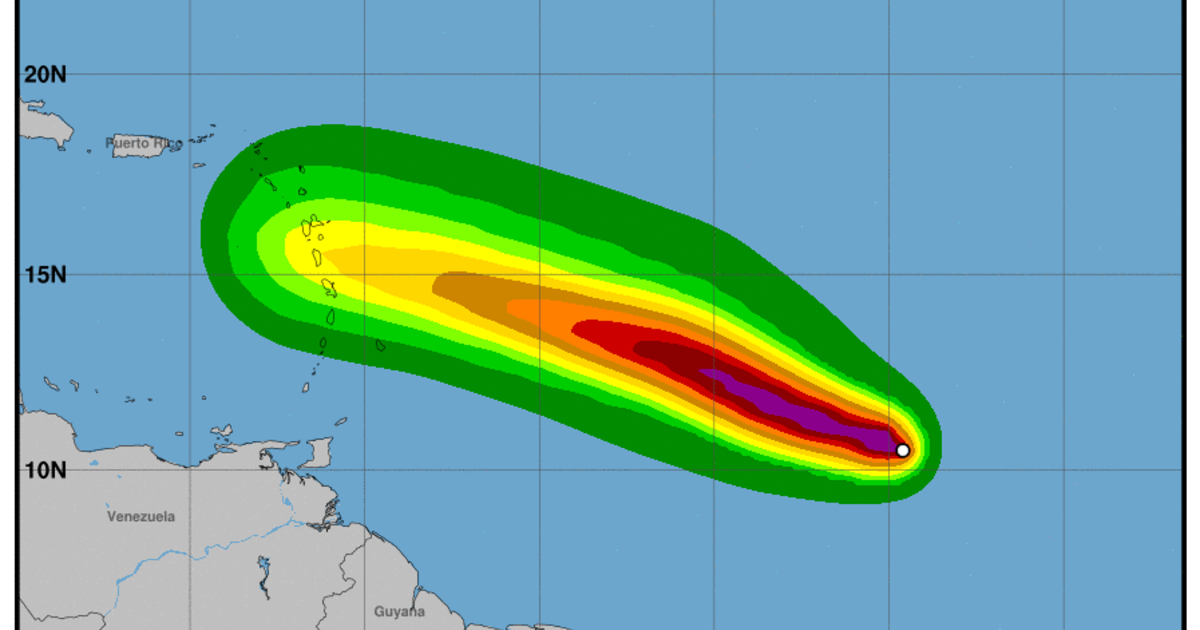Hurricane Beryl’s Path and Intensity: Beryl Hurricane Path
Hurricane Beryl was a powerful tropical cyclone that formed in the Atlantic Ocean in 2018. The hurricane originated as a tropical wave that emerged from the coast of Africa on July 6th. Over the next few days, the wave gradually organized and strengthened, becoming a tropical storm on July 8th and a hurricane on July 10th.
Hurricane Beryl’s Path
Hurricane Beryl followed a generally westward track across the Atlantic Ocean. On July 12th, the hurricane made landfall on the island of Dominica as a Category 4 hurricane. The hurricane then continued westward, passing near Puerto Rico and the Dominican Republic before making a second landfall in the Bahamas on July 14th as a Category 3 hurricane. Beryl weakened to a tropical storm as it moved away from the Bahamas and eventually dissipated over the open waters of the Atlantic Ocean on July 16th.
Hurricane Beryl’s Intensity
Hurricane Beryl reached its peak intensity as a Category 4 hurricane with maximum sustained winds of 130 mph (215 km/h) on July 12th. The hurricane maintained this intensity for several hours before weakening as it made landfall on Dominica. After making landfall, Beryl continued to weaken, but it remained a powerful hurricane until it made landfall in the Bahamas. The hurricane weakened to a tropical storm as it moved away from the Bahamas and eventually dissipated over the open waters of the Atlantic Ocean on July 16th.
Impact of Hurricane Beryl
Hurricane Beryl caused significant damage in the areas it affected. On Dominica, the hurricane caused widespread flooding and landslides, resulting in at least nine deaths. In Puerto Rico, the hurricane caused power outages and flooding, but there were no reported deaths. In the Bahamas, the hurricane caused damage to homes and businesses, but there were no reported deaths.
Impacts of Hurricane Beryl

Beryl hurricane path – Hurricane Beryl brought devastating impacts to coastal communities and inland areas. The storm’s powerful winds and heavy rainfall caused widespread damage to infrastructure, property, and natural ecosystems.
Coastal Impacts
- Flooding: Beryl’s storm surge and heavy rains inundated coastal areas, submerging homes and businesses. The flooding also washed away roads and bridges, disrupting transportation and access to essential services.
- Erosion: The hurricane’s strong winds and waves battered beaches and dunes, causing significant erosion. This erosion threatened coastal infrastructure and increased the risk of future flooding.
- Salinization: The saltwater flooding contaminated freshwater sources, including wells and aquifers. This salinization can have long-term impacts on drinking water supplies and agriculture.
Inland Impacts
- Flooding: Heavy rains from Beryl caused rivers and streams to overflow, leading to widespread flooding in inland areas. The flooding damaged homes, businesses, and crops.
- Wind Damage: The hurricane’s strong winds toppled trees and power lines, causing widespread power outages. The winds also damaged buildings and infrastructure, including schools, hospitals, and government buildings.
- Landslides: Beryl’s heavy rains saturated the ground, triggering landslides in mountainous areas. The landslides blocked roads and damaged homes and businesses.
Economic Losses and Disruptions
Hurricane Beryl caused significant economic losses and disruptions. The damage to infrastructure, property, and natural ecosystems will take time and resources to repair. The hurricane also disrupted businesses and tourism, leading to lost revenue and job losses.
Historical Context and Comparison

Hurricane Beryl, a Category 3 storm, made landfall in the Caribbean in 2018. While it caused significant damage and loss of life, it is not the first hurricane to impact the region. Comparing Beryl to other hurricanes provides a historical context and valuable insights for future preparedness efforts.
Comparison with Hurricane Ivan
Hurricane Ivan, a Category 5 storm, struck the Caribbean in 2004, leaving a trail of devastation. Both Beryl and Ivan followed similar paths, affecting the same islands and coastal areas. However, Ivan was significantly more intense, with higher wind speeds and a larger storm surge. The impact of Ivan was more severe, resulting in widespread infrastructure damage and a higher death toll.
Comparison with Hurricane Irma
Hurricane Irma, another Category 5 storm, hit the Caribbean in 2017. While Irma’s path was slightly different from Beryl’s, both storms caused extensive damage to infrastructure, homes, and businesses. Irma was also more intense, with stronger winds and a wider storm surge. The recovery from Irma is still ongoing in some areas.
Lessons Learned, Beryl hurricane path
The experiences from previous hurricanes, including Beryl, Ivan, and Irma, have taught valuable lessons for disaster preparedness and response. These lessons include the importance of:
- Early warning systems and evacuation plans
- Reinforcing infrastructure to withstand high winds and storm surges
- Stockpiling emergency supplies and resources
- Coordinating relief efforts and providing support to affected communities
By applying these lessons, communities can better prepare for and mitigate the impact of future hurricanes.
The path of Hurricane Beryl is unpredictable, just like the twists and turns of Ryan Clark’s life. His journey from football stardom to motivational speaker Ryan Clark is a testament to resilience. But like the hurricane, Ryan’s path is ever-changing, leading him towards new challenges and opportunities.
As Beryl continues its uncertain course, Ryan’s story reminds us that even in the face of adversity, the path forward can be both unpredictable and inspiring.
The path of Hurricane Beryl continues to be monitored closely, as it poses a potential threat to the Gulf Coast. Meanwhile, in the world of sports, the Pittsburgh Steelers have been making headlines with the acquisition of Brandon Aiyuk, a promising wide receiver.
Aiyuk is expected to make a significant contribution to the Steelers’ offense, bringing speed and athleticism to the team. As the Beryl hurricane path continues to shift, meteorologists are urging residents in affected areas to stay informed and take necessary precautions.